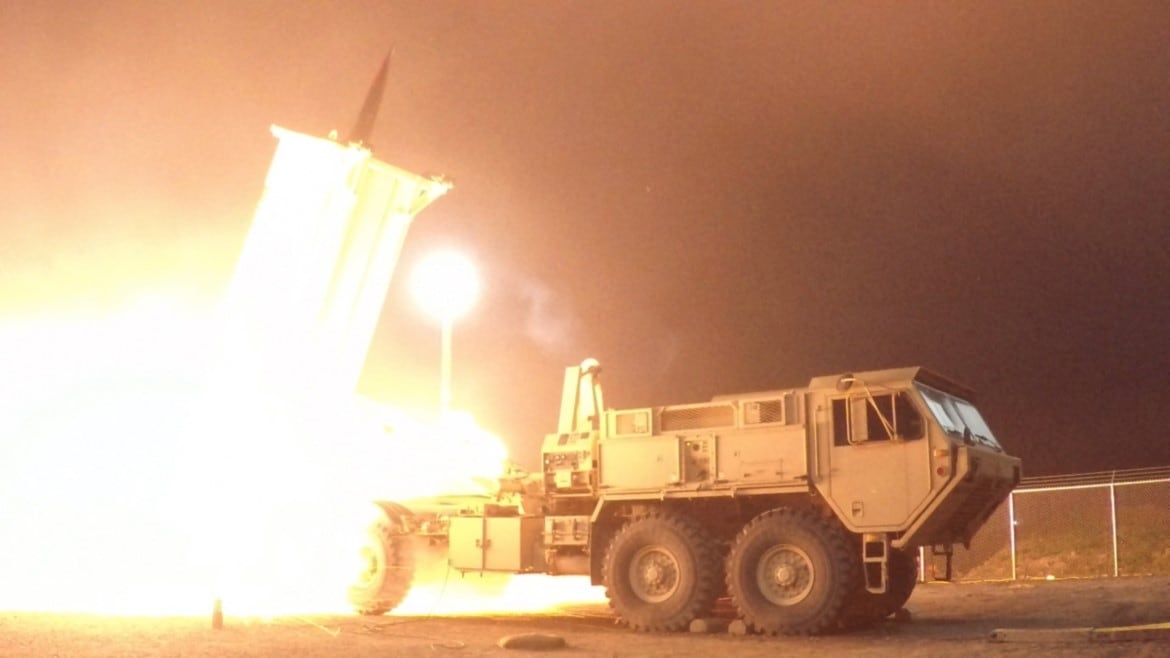WASHINGTON — The first-ever test of the Terminal High Altitude Area Defense system’s ability to remotely fire an interceptor was deemed a success by the U.S. Missile Defense Agency.
Following the test in the early hours of Aug. 30, the Lockheed Martin-made THAAD has now had 16 successful intercept tests in a row. But the significant milestone is proving the ability to remotely engage the system with a government-developed remote launcher kit.
The capability provides extended range of a defended area, an MDA statement notes.
“Preliminary indications are that planned flight test objectives were achieved and the target was successfully intercepted by the THAAD weapon system,” the statement reads.
"This test demonstrates the expanding capabilities of the THAAD weapon system and its ability to intercept and destroy ballistic missile threats in defense of our nation, deployed forces and allies,” MDA Director Vice Adm. Jon Hill said in the statement.
RELATED

THAAD operators from the E-62 Battery conducted radar operations as well as launcher and fire control operations employing a procedure used in combat and were unaware of the target-launch timing.
The ability to launch an interceptor remotely achieves a more layered — and ultimately less stove-piped — approach to regional ballistic missile defense and to increase the battlespace.
The U.S. Army is also working to integrate the Patriot medium-range air-and-missile defense system with THAAD in response to an urgent operational need on the Korean Peninsula.
That effort uses some of the same principles of decoupling launchers and radars so an operator can, for instance, use a THAAD radar (which can see farther than a Raytheon-made Patriot radar) but decide to engage a Patriot interceptor depending on the threat picture.
The ability to use the THAAD radar also gets more out of the Patriot Advanced Capability-3 Missile Segment Enhancement (PAC-3 MSE) missile fired from Patriot units, which outperforms the organic Patriot radar.
RELATED

Earlier, in an Aug. 29 Army test also at White Sands Missile Range, a PAC-3 Cost Reduction Initiative interceptor took out an air-breathing threat “at a record distance," according to a Lockheed Martin statement. The company builds the missile as well as the PAC-3 MSE.
The test also showed it can be integrated into the Northrop Grumman-made Integrated Air and Missile Defense Battle Command System, the command-and-control system of the Army’s future air and missile defense architecture.
The test demonstrated the Northrop system’s ability to detect, track and engage a low-flying threat at a distance that exceeds the range of the current Patriot system, according to a Northrop Grumman statement.
Jen Judson is an award-winning journalist covering land warfare for Defense News. She has also worked for Politico and Inside Defense. She holds a Master of Science degree in journalism from Boston University and a Bachelor of Arts degree from Kenyon College.








